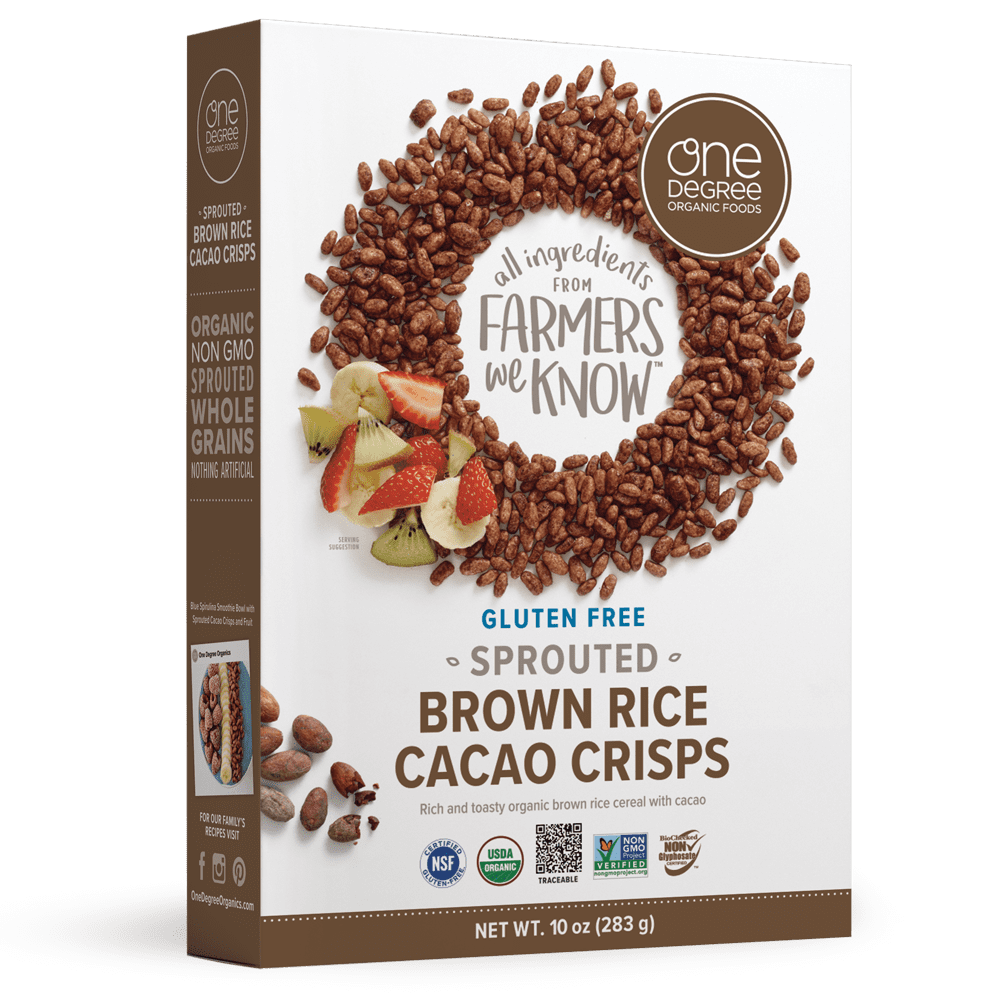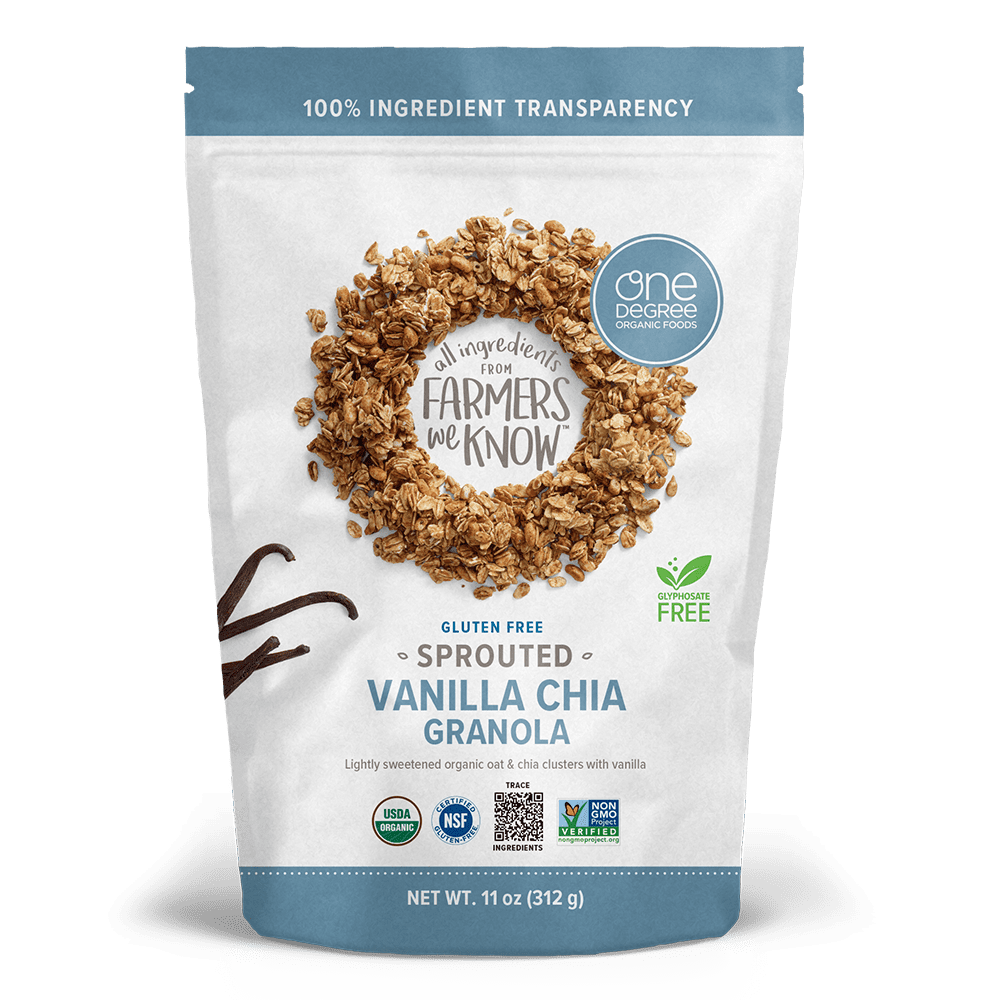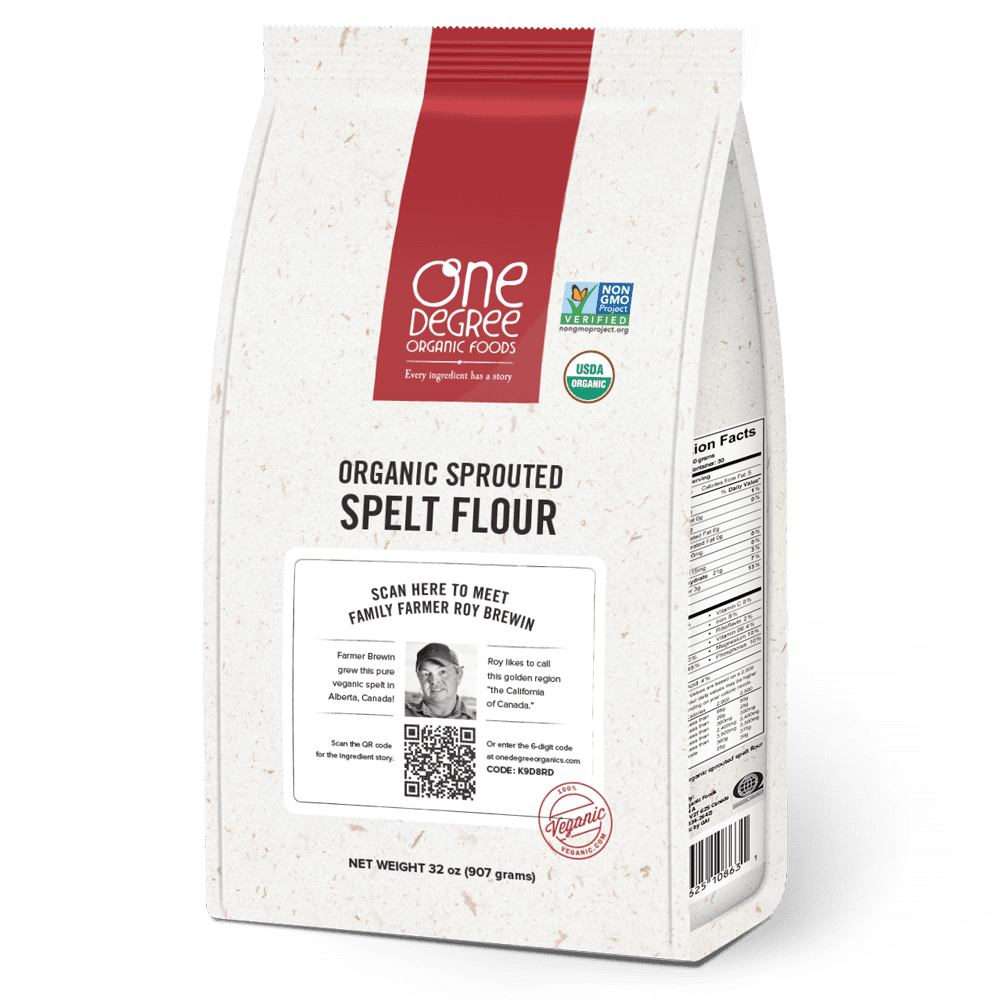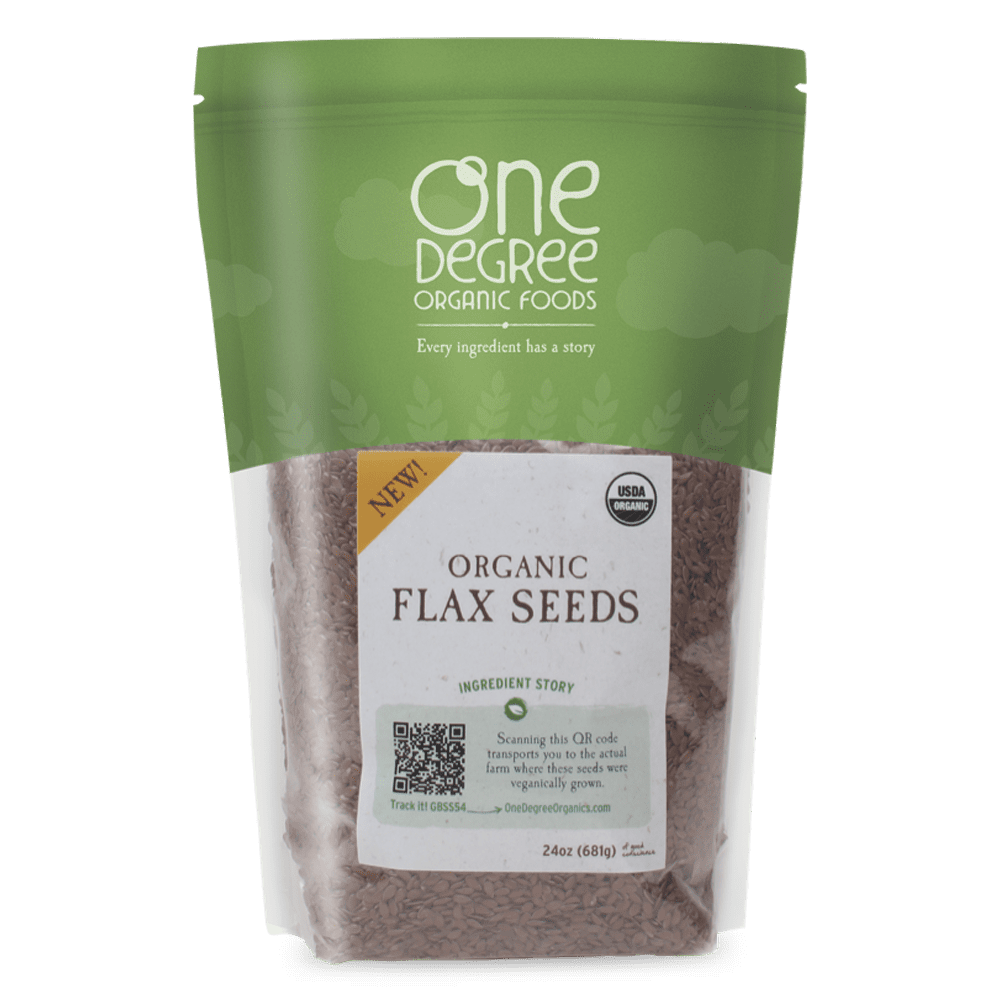Vanilla
Tripper
If you are lucky enough to find yourself on a spice safari on the Indonesian island of Sulawesi, your days will be measured not in hours, but rather in moments of wonder and surprise.
Contemplating the beauty of the landscape, the emerald hills that recede like tides from fiery Soputan Mountain, was our first unforgettable moment. Our guide for the spice journey promised another waiting for us at our final destination, the home of One Degree’s newest veganic farmer, Amelius Manopo.
“His vanilla farm is surrounded with coconut trees, so for us, after the uphill road a fresh coconut usually is waiting, if there is a coconut climber there,” said Meidy Vidiayani, liaison for Tripper, Inc., a company founded by a French family to export Indonesian spices to a world suddenly hungry for the flavors and purity of this rich tropical land.
The coconut trees help shelter vanilla seedlings, one of the most delicate plants in nature. Vanilla is as fragile and fleeting as a beautiful flower, because that’s exactly what it is — the only edible orchid in the world. In addition to shade, vanilla blossoms require patience and loving attention.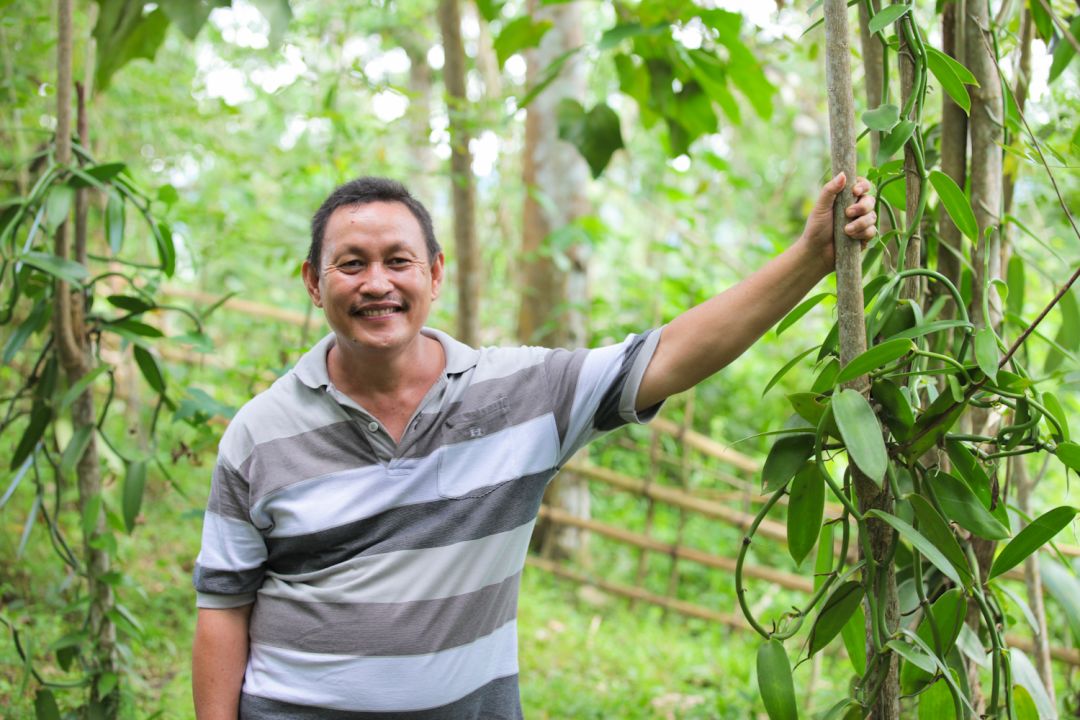
“I treat the vanilla plant almost like a baby,” Amelius explained as he led us through a dense leafy maze. “Pollinating vanilla is a very delicate process, and if it is not done carefully the flower will easily become bent or broken, and will not long survive. Pollinating can only happen when the flower of the vanilla plant blooms. We must check it every day, because once a flower blooms, if it is not pollinated it will die the next day.”
In nature, there is only one kind of bee that can pollinate a vanilla plant, the Melipona bee native to Mexico. The rarity and languid work ethic of this particular bee means that most global vanilla production is dependent on hand pollination of blossoms. On each stem, only a few blossoms can be pollinated at once; workers use a special instrument when the time is right.
Amelius discovered the wonders of vanilla as a young boy, working on his father’s land. Today, the son carries on not only the family tradition of farming, but also the great inheritance of the family’s reputation in the community. Amelius’ father helped other farmers in the region market their crops in town. Father and son have also donated money or provided advances to local farmers that are in need.
“When you stay in the village and you have a farmland or a business, you feel an obligation to help or support the surrounding neighbors,” remarked Meidy. “Some of his neighbors are actually friends from his childhood and also relatives. He likes them to be involved in the process, and being surrounded by the people makes him more excited to farm. He pays the wages of the people who work with him, who are actually small farmers too.”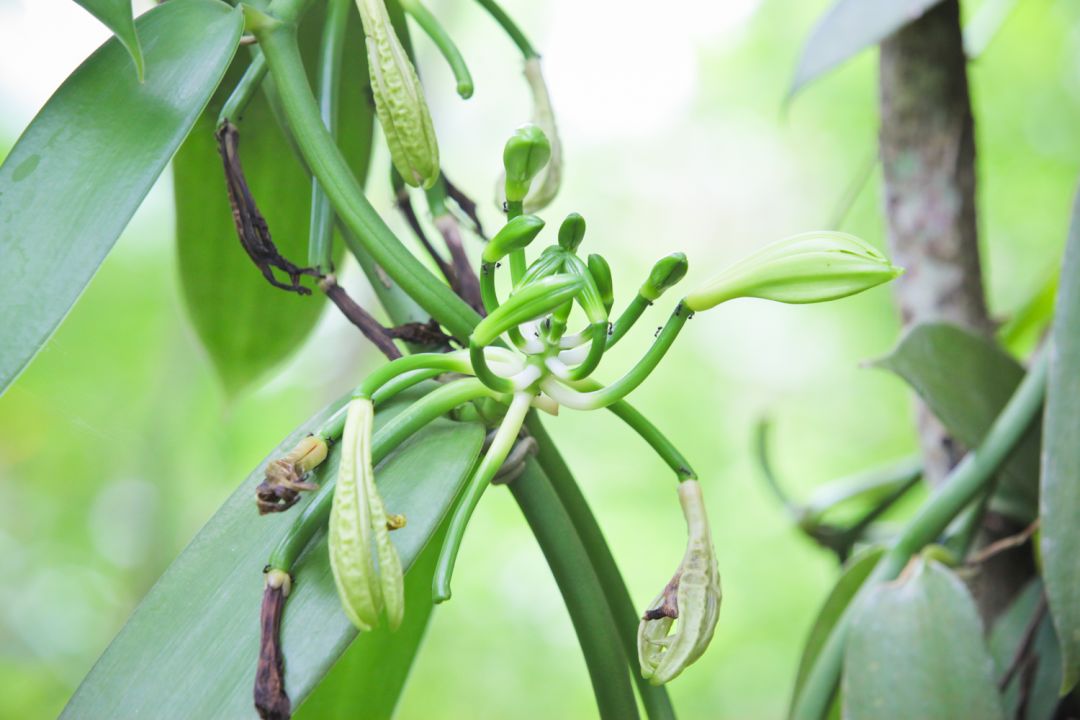
Many clove trees on the land are as deep-rooted as the family tradition of generosity. Some are a century old, with a pedigree that can traced back to the original varieties planted by the Dutch.
“The Dutch introduced the Zanzibar genus clove here and supervised the process,” Meidy noted. “What is sad at the time was that after all the clove was harvested, the Dutch collected and shipped all the harvest to Europe, and left the local people nothing except for the trees.”
Indonesia’s colonial rulers also soon recognized an advantage to growing vanilla in Sulawesi. Because of the longer growing season, vanilla plants mature for eight months out of the year, rather than the usual seven months common in many other regions. As a result, the vanilla content is higher in the beans cultivated here.
In addition to the long, warm growing season, Amelius’ vanilla also has the advantage of being 100% organic. “The main difference between our organic vanilla and vanilla that is grown conventionally elsewhere in Indonesia is that from the moment conventional farmers plant vanilla they surround it with crops that use fertilizers,” he noted. “The organic practices we use are all-natural, and add value to the product. Conventional farmers are actually paying more to grow their plants by using pesticides and fertilizer.”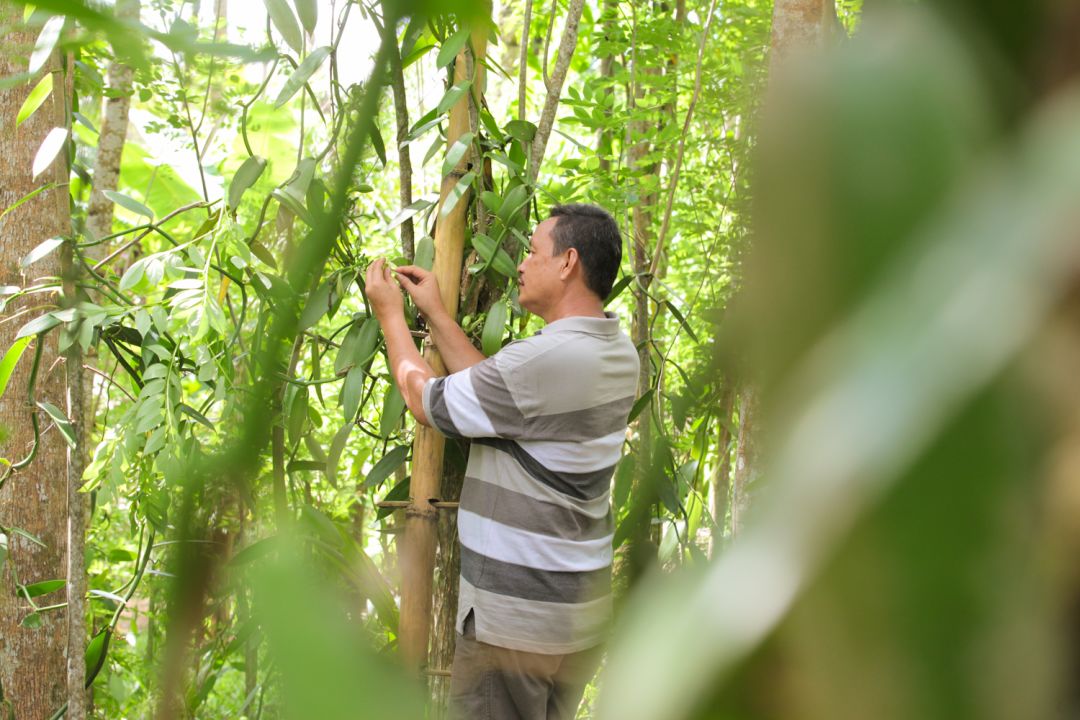
Amelius has been spreading the word about the benefits of pure organic vanilla and cloves to others in his community, as well as to international visitors. “I have explained organic to many farmers in this region, that this is a healthy way to grow food that is also healthy to eat. I believe in the next 5 to 10 years our organic farming business will become even more popular internationally, allowing our workers and all the people of this region to prosper.”
This generous farmer is excited that One Degree’s technology-driven transparency will help bring his story to the world. “I am very grateful that One Degree is not only introducing our products to so many customers, but also actually introducing us as farmers, as people, and as a community,” he told us.
And this, too, was one of those great moments of wonder and surprise. For if you are lucky enough to find yourself on a spice safari on the Indonesian island of Sulawesi, you may discover this at the end of your path: the exhilarating understanding that for a man like Amelius Manopo, farmers, people, and community are just different words for the very same thing.
— Charlie Dodge

